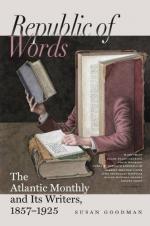THE NAMING OF THEM.
It would be a pleasant pastime to find suitable names for the hundred varieties which go to a single heap at the cider-mill. Would it not tax a man’s invention,—no one to be named after a man, and all in the lingua vernacula? Who shall stand godfather at the christening of the wild apples? It would exhaust the Latin and Greek languages, if they were used, and make the lingua vernacula flag. We should have to call in the sunrise and the sunset, the rainbow and the autumn woods and the wild flowers, and the woodpecker and the purple finch and the squirrel and the jay and the butterfly, the November traveller and the truant boy, to our aid.
In 1836 there were in the garden of the London Horticultural Society more than fourteen hundred distinct sorts. But here are species which they have not in their catalogue, not to mention the varieties which our Crab might yield to cultivation.
Let us enumerate a few of these. I find myself compelled, after all, to give the Latin names of some for the benefit of those who live where English is not spoken,—for they are likely to have a world-wide reputation.
There is, first of all, the Wood-Apple (Malus sylvatica); the Blue-Jay Apple; the Apple which grows in Dells in the Woods, (sylvestrivallis,) also in Hollows in Pastures (campestrivallis); the Apple that grows in an old Cellar-Hole (Malus cellaris); the Meadow-Apple; the Partridge-Apple; the Truant’s Apple, (Cessaloris,) which no boy will ever go by without knocking off some, however late it may be; the Saunterer’s Apple,—you must lose yourself before you can find the way to that; the Beauty of the Air (Decus Aeris); December-Eating; the Frozen-Thawed, (gelato-soluta) good only in that state; the Concord Apple, possibly the same with the Musketaquidensis; the Assabet Apple; the Brindled Apple; Wine of New England; the Chickaree Apple; the Green Apple (Malus viridis);—this




